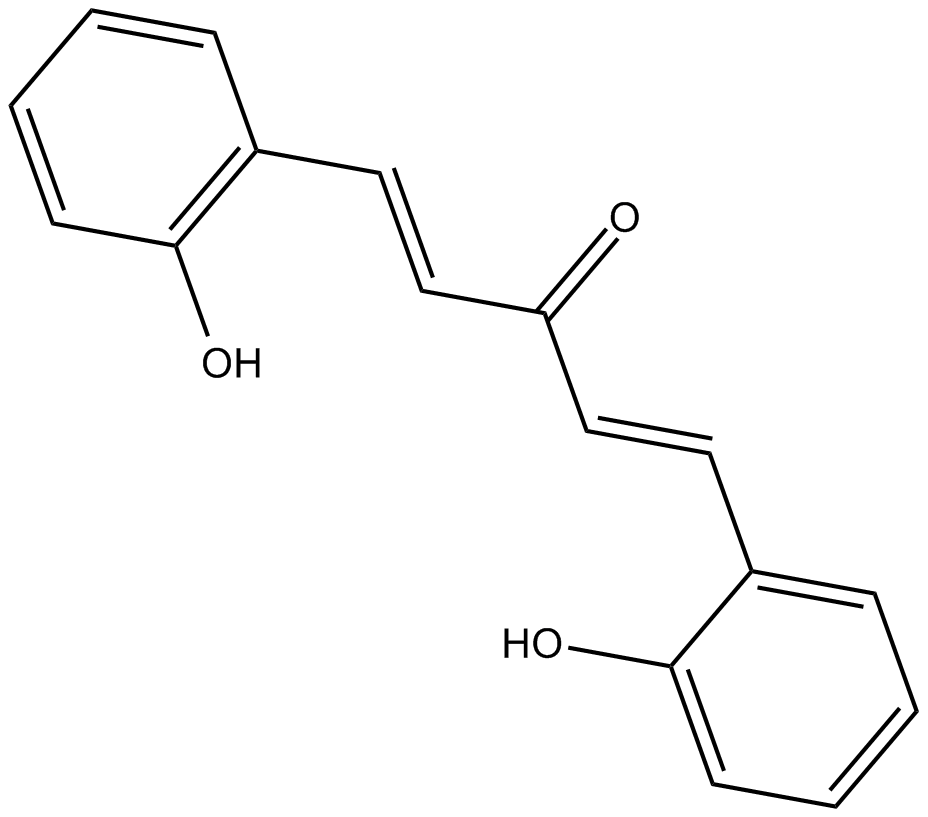2-HBA (Synonyms: Bis(2-hydroxybenzylidene)acetone) |
| Catalog No.GC12545 |
indirect inducer of enzymes that catalyze detoxification reactions through the Keap1-Nrf2-ARE pathway.
Products are for research use only. Not for human use. We do not sell to patients.

Cas No.: 131359-24-5
Sample solution is provided at 25 µL, 10mM.
2-HBA is an inducer of the Keap1-Nrf2-ARE pathway.
Keap1-Nrf2-ARE directly react with Keap1, the sensor protein for inducers, leads to enhanced transcription of phase 2 genes and protection against oxidant and electrophile toxicities.
In vitro: 2-HBA could markedly increase the activities of NAD(P)H:quinone acceptor oxidoreductase 1 (NQO1) and glutathione reductase, the levels of total glutathione, as well as the phase 2 response markers. In addition, at high concentrations 2-HBA caused G2/M cell cycle arrest and apoptosis. Moreover, the mutant L1210 cell line was found to be more sensitive to the apoptotic effects of 2-HBA [1].
In vivo: The effect of 2-HBA on the DMBA-induced expression of the Ha-ras gene in isolated RNA tissues of CBA/Ca inbred mice was investigated. According to the previous findings, elevated Ha-ras expression was obserrved even 24 h after DMBA treatment. Administration of 2-HBA with DMBA could lead to a decrease of the DMBA-induced Ha-ras gene expression in all the investigated tissues, suggesting metabolic interaction of 2-HBA and DMBA. In addiiton, administration of 2-HBA 24 h prior to the DMBA treatment was able to reduce the Ha-ras gene expression in all tested tissues except the liver, which could be the result of a possible CYP1A inducer and pro-oxidant effects of 2-HBA [2].
Clinical trial: Up to now, 2-HBA is still in the preclinical development stage.
References:
[1] A. T. Dinkova-Kostova, A. H. Cory, R. E. Bozak, et al. Bis(2-hydroxybenzylidene)acetone, a potent inducer of the phase 2 response, causes apoptosis in mouse leukemia cells through a p53-independent, caspase-mediated pathway. Cancer Letters 245, 341-349 (2007).
[2] Perjési P, Ember I, Bozak RE, Nádasi E, Rozmer Z, Varjas T, Hicks RJ. Effect of the chalcone analog E,E-bis(2-hydroxybenzylidene) acetone on the 7,12-dimethylbenz[a]anthracene-induced Ha-ras gene activity in vivo. In Vivo. 2006 Jan-Feb;20(1):141-6.
Average Rating: 5 (Based on Reviews and 26 reference(s) in Google Scholar.)
GLPBIO products are for RESEARCH USE ONLY. Please make sure your review or question is research based.
Required fields are marked with *




















